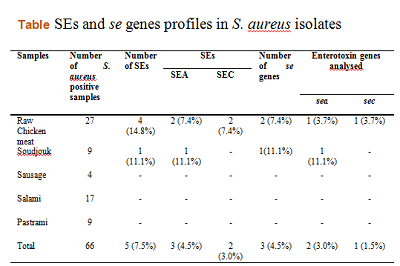
Fulden Karadal
Omer Halisdemir University, Turkey
Title: Identification of toxigenic S. aureus in some foods of animal origin in Kayseri, Turkey
Biography
Biography: Fulden Karadal
Abstract
Statement of the Problem: Coagulase-positive S. aureus strains are considered as the most pathogenic bacteria of all the staphylococci because of their ability to produce toxins. Foods of animal origin are the foods mostly incriminated for staphylococcal food poisonings which may be contaminated during slaughtering, processing or handling.
Aim: The aim of this study was to detect Staphylococcus aureus in some foods of animal origin and to determine staphylococcal enterotoxins (SEs), enterotoxin genes (sea to see) and the toxic shock syndrome toxin (tst) gene in the isolates.
Methodology & Theoretical Orientation: A total of 170 samples including soudjouk, salami, sausage, pastrami and raw chicken meat were randomly collected and examined. Positive samples were confirmed by PCR using the femA gene as an internal positive control for S. aureus. Multiplex PCR was used to detect se and tst genes and SEs were determined by ELISA.
Findings: Of the 66 (38.8%) isolates characterized as S. aureus, 27 (40.9%) were obtained from raw chicken meat, 17 (25.7%) from salami, nine (13.6%) from soudjouk, nine (13.6%) from pastrami and four (6.06%) from sausage. SEs were identified in 5 out of 66 (7.5%) isolates including three (4.5%) SEA, two (3.03%) SEC. However, the sea and sec genes were detected in 3 (4.5%) of 66 isolates. None of the isolates were positive for tst genes.
Conclusion & Significance: The results of this study indicate that the prevalence of S. aureus in foods of animal origin was high but low number of samples had a potential health risk with regard to staphylococcal enterotoxins. Carriers and origins of enterotoxigenic S. aureus contaminants should be followed up further studies to understand to and prevent sources of contamination.


